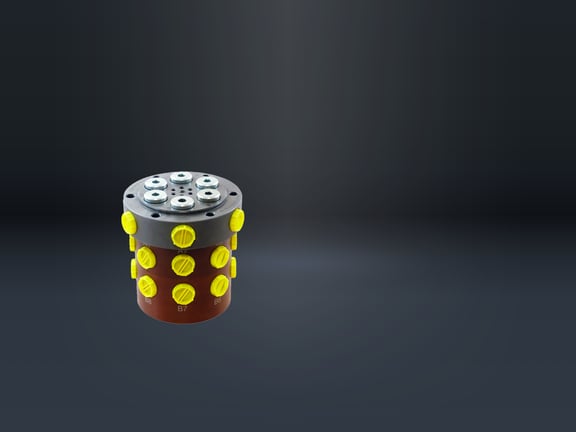
500-4 Controlled rotary unions Nominal size 5, for single/double-acting clamping elements, pmax. 350 bar
Controlled rotary feedthroughs transfer hydraulic oil to rotary indexing tables. The construction is designed as a rotary valve. This allows several hydraulic devices to be supplied with pressurized oil at the same time and a loading and unloading station to be clamped or unclamped independently of this via directional control valves.
Info
directional seat valves to control the rotary feedthroughs.
Special features:
-
Axial and radial connections in the piston
-
Standard variants and special variants available
-
Single-acting and double-acting available
-
Up to 10 stations possible
-
with 1 or 2 stations for loading/unloading
-
for separate or simultaneous control
Functional principle:

The controlled rotary feedthroughs must be installed in such a way that no bending moment is exerted on the stationary or rotating component. It has proven to be a good idea to bolt the rotating housing to the connections to the clamping devices and only secure the stationary rotary piston against rotation (do not introduce any bearing forces). The line connection from the torque arm to the rotary piston should only be made via hose lines.

